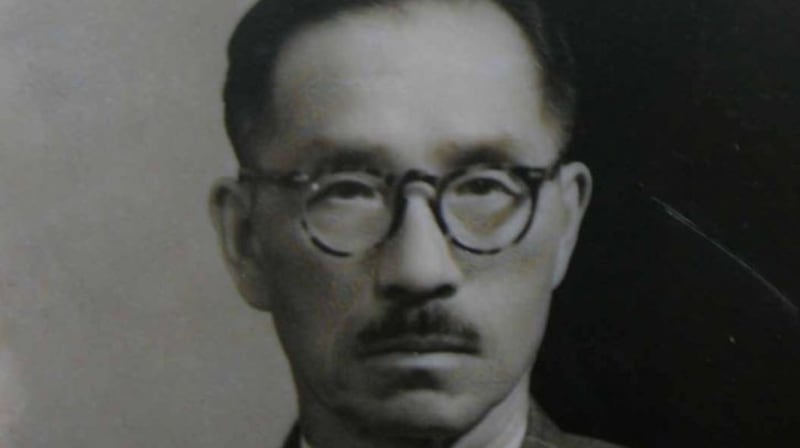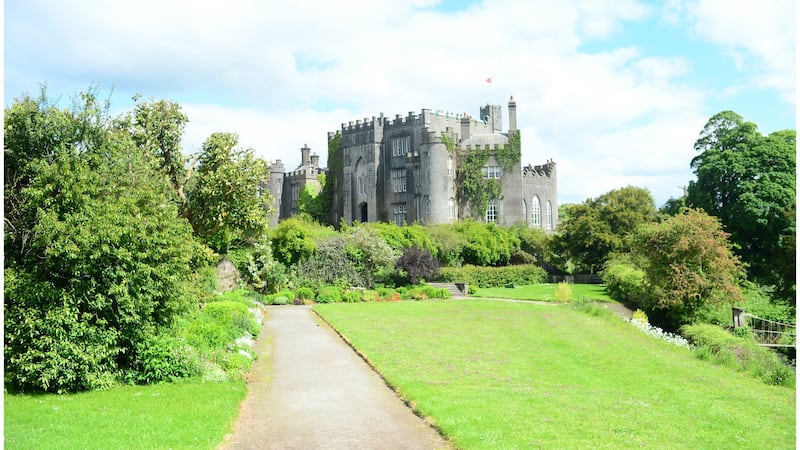Prof Hu Hsen-Hsu (1894-1968) was a real renaissance man. He was the founder of Chinese botany and a great poet and intellectual. A large proportion of his works was lost or forgotten because of political turmoil. However, his connection with the sixth earl of Rosse at Birr Castle, Co Offaly, might have saved some of his legacy.
His granddaughter Dr Hu Xiaojiang, a doctor in sociology working in Beijing, is visiting Ireland looking for clues of her grandfather's work. She has been invited by the present Earl of Rosse to visit Birr Castle and search in the archives for her grandfather's letters.
“The fact that I am in Birr Castle is incredible. I never imagined it would happen. It’s really fate that connected our families,” she says. She is currently gathering her grandfather’s writings in order to publish a complete collection of his works.


Prestigious institute
Hu, an eminent Chinese scientist, cofounded the Fan Memorial Institute of Biology in Beijing, the most prestigious biological research institute in China. He also founded the Lushan Botanical Garden and Arboretum, the first botanical garden in China.
By 1940 he had built the largest herbarium in the country, which had more than 185,000 specimens. He obtained these from field trips and also through exchange with American and European botanists and institutions.
Among his correspondents was the sixth earl of Rosse, the present earl’s father, who met Hu during his honeymoon trip to China in 1935 or 1936.
The earl was visiting his brother, Desmond Parsons, who was living in China at the time. The meeting sparked a collaboration and friendship that spanned 30 years, with the exchange of letters and seeds. Many of these seeds were planted in Birr Castle gardens and are now large trees.
Unfortunately, during the second World War, invading Japanese forces destroyed or took the collections housed at the Fan Memorial Institute back to Japan. After the end of the war, Hu and his colleagues returned to Beijing to find that less than half of the specimens had survived.
Nevertheless, he continued with his research and years later found that a species of the tree metasequoia – which had only been observed in fossils – was actually alive and thriving in China.
The first specimen of metasequoia in western Europe was planted in the gardens at Birr Castle and can be seen today.
“He is unique in the way he combined his expertise in botany with his love of poetry, so he wrote poems about botany in classical Chinese form,” says his granddaughter. One of these is dedicated to the metasequoia he helped rediscover.
“He was a man with very, very wide interests. He was interested in all kinds of things: education, politics [and] economy.” However, his criticism of the Chinese government made his research difficult in later years.
Unfortunately, his political leanings caused his legacy to be forgotten after his death. “When I was young I didn’t know about him because of the political things. Very few people knew about him but in recent years there’s been a growing interest in China to discover more about this great man,” she says.
She was born after her grandfather’s death and never met him. “My grandfather and the sixth earl met in China and wrote letters to each other for 30 years, but that connection was lost because of the political problems. My family did not know about Birr Castle.”
Luckily, copies of her grandfather’s letters have been preserved in the archive in Birr and can now be included in the complete works, which it is predicted will take up about 25 volumes. His enormous contributions to Chinese science are now being recognised.
His public disagreements with the theories of Russian scientist Trofim Lysenko have made it to the history books, and the story is now taught in school in China.
“Such an exciting event to meet the granddaughter of this correspondent of my father,” says Brendan Parsons, the seventh earl of Rosse. He considers the Chinese plants and trees in his garden among the most important in their collections. The specimens were provided in return for his father’s patronage.
Asked about her grandfather’s greatest legacy, Dr Hu says: “It’s too profound to even pick one. I would actually say he’s this rare combination of natural sciences and social sciences and humanities together. That’s the quality I admire the most [in him]. It’s rare to find that nowadays.”
THE PARSONS FAMILY: A TRADITION OF SCIENCE
Birr Castle is home to more than just gardens. The Parsons family, who arrived at the castle in the 17th century, has had many scientific interests.
William Parsons, the third earl of Rosse, designed and built what was at the time the largest telescope in the world, known as Leviathan. Built in the 1840s, the telescope is still working today and can be seen in the gardens. Using this instrument, the third earl discovered the spiral shape of some galaxies.
His wife, Mary, was a pioneering photographer, and the dark room she used – the oldest in Europe – has been preserved as a museum. William and Mary’s eldest son, the fourth earl of Rosse, also carried out astronomical investigations, inventing a machine that could measure the heat emitted by the moon.
Charles Algernon Parsons, the youngest son of the third earl, also displayed an interest in science. He studied maths at Trinity College Dublin and Cambridge and enrolled as an apprentice at an engineering firm. He is best known for inventing the compound steam engine, which transformed naval transport and warfare.
The current earl’s father, Michael Parsons, and his wife, Anne, created the gardens we see today. They collected and planted rare plants and trees from all over the world, travelling to distant countries to obtain them. Their son continued the tradition with his own plant-hunting expeditions.









